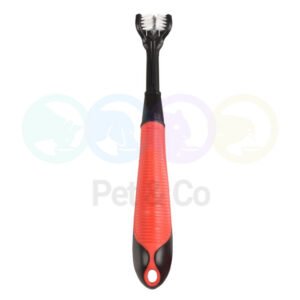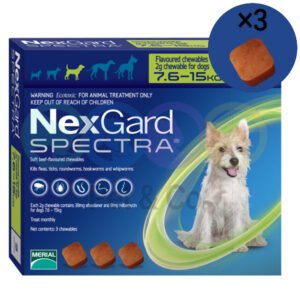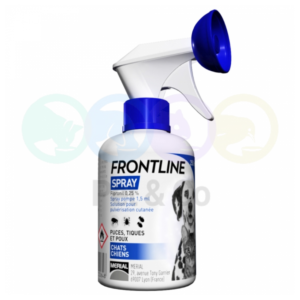– Treatment of flea infestations (Ctenocephalides felis and C. canis) in dogs for 5 weeks.
– Treatment of tick infestations (Dermacentor reticulatus, Ixodes ricinus, Ixodes hexagonus, Rhipicephalus sanguineus) in dogs for 4 weeks.
Fleas and ticks must be attached to the animal and have started feeding in order to be exposed to the active substance.
– Treatment of infestations with adult gastrointestinal nematodes of the following species: ascarids (Toxocara canis and Toxascaris leonina), hookworms (Ancylostoma caninum, Ancylostoma braziliense and Ancylostoma ceylanicum) and whipworms (Trichuris vulpis).
– Treatment of demodicosis (due to Demodex canis).
– Treatment of sarcoptic mange (caused by Sarcoptes scabiei var. canis).
– Prevention of heartworm disease (larvae of Dirofilaria immitis) with monthly administration.
– Prevention of angiostrongyliasis (by reducing the rate of infestation by immature (L5) and adult forms of Angiostrongylus vasorum) with monthly administration.
– Prevention of the establishment of thelaziosis (infection by the adult eyeworm of Thelazia callipaeda) with monthly administration.
Method of administration
The tablets are chewable and are palatable to the majority of dogs. If the dog does not accept the tablets directly, they can be administered with food.
Treatment regimen
The treatment regimen should be based on the veterinary diagnosis and the local epidemiological situation.
– Treatment of flea infestations (Ctenocephalides felis and C. canis) in dogs for 5 weeks.
– Treatment of tick infestations (Dermacentor reticulatus, Ixodes ricinus, Ixodes hexagonus, Rhipicephalus sanguineus) in dogs for 4 weeks.
Fleas and ticks must be attached to the animal and have started feeding in order to be exposed to the active substance.
– Treatment of infestations with adult gastrointestinal nematodes of the following species: ascarids (Toxocara canis and Toxascaris leonina), hookworms (Ancylostoma caninum, Ancylostoma braziliense and Ancylostoma ceylanicum) and whipworms (Trichuris vulpis).
– Treatment of demodicosis (due to Demodex canis).
– Treatment of sarcoptic mange (caused by Sarcoptes scabiei var. canis).
– Prevention of heartworm disease (larvae of Dirofilaria immitis) with monthly administration.
– Prevention of angiostrongyliasis (by reducing the rate of infestation by immature (L5) and adult forms of Angiostrongylus vasorum) with monthly administration.
– Prevention of the establishment of thelaziosis (infection by the adult eyeworm of Thelazia callipaeda) with monthly administration.
Method of administration
The tablets are chewable and are palatable to the majority of dogs. If the dog does not accept the tablets directly, they can be administered with food.
Treatment regimen
The treatment regimen should be based on the veterinary diagnosis and the local epidemiological situation.







Reviews
There are no reviews yet.